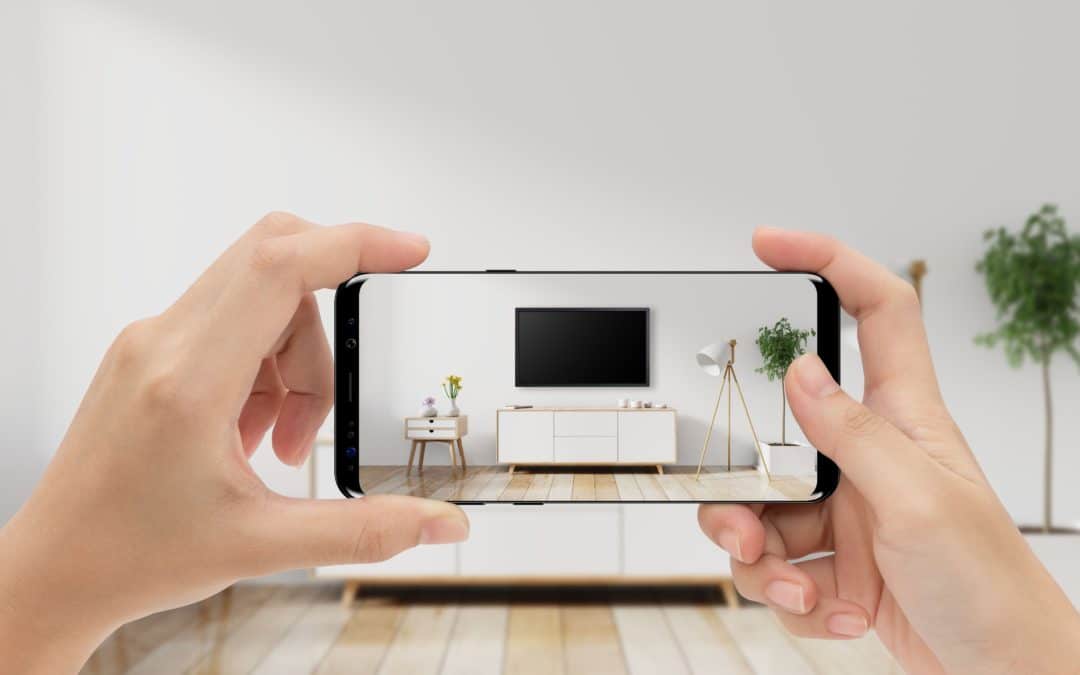
This article is the latest in AR Insider’s editorial contributor program. Find out more or contact us to participate here. Authors’ opinions are their own.
Why Augmented Reality Will Be A Post-Pandemic Mainstay For eCommerce
by Jon Cheney
The global COVID-19 pandemic has created upheaval in countless ways, forcing many to adapt to a new way of living. Similarly, every industry has had to learn how to adapt in order to stay afloat. The online retail industry, in particular, has seen many changes as the pandemic has pressed on.
For example, the initial impact saw a major uptick in online sales for eCommerce brands, up nearly 50 percent in April. This makes sense, as shopping online is the most obvious solution for the consumer to get what they need while sheltering in place.
However, as people normalize their lives around the pandemic, and the initial panic-buying has dropped off, a larger consumer trend is occurring that online retail brands should take note of.

Consumers Are Rethinking In-Person Purchases
Over the past few months since lockdowns began, people have had to change their idea of what it means to go out shopping. It’s no longer safe to simply run out for a quick item or errand without thinking ahead. Consumers are asking themselves “what do I need, how can I limit my exposure, and can I buy this from home?” Basically, the pandemic has shifted the consumer mindset on what needs to be purchased from a physical store. As a result, eCommerce brands have a chance to answer those questions for consumers by boosting their online experience.
Why Augmented Reality Suits Online Retail
Augmented reality (AR) is one of the most powerful digital tools in the world. The technology has been adapted by dozens of brands into a number of uses, including education, marketing, L&D training and more, and AR’s flexibility allows itself to be applied strategically in an online retail context too. Brands that have been early adopters of AR technology on their eCommerce sites have seen a significant lift in sales for years. Internal data from brands including Nestle and Overstock.com, show conversion rates are increasing anywhere from 10 percent to as much as 200 percent and product returns are dropping by 25 percent. Time to make buying decisions has been cut in half. AR is making impacts with real Return-On-Investment (ROI) that can’t be ignored, even without the pandemic.
Following guidelines and refraining from going outside as much as possible requires consumers to be careful and confident in their online purchase decisions. Mistakes equate to more time spent outside having unnecessary interactions, thus raising risk all around. AR has the potential to mitigate this by better informing purchase decisions and bringing a unique and immersive brand experience right to the customer’s home.

We Already Have Real-World Examples
Before the pandemic struck, brands were already reaping the benefits of AR. Getting creative is the name of the game, and several brands stand out as exceptional examples of how AR can be effectively applied:
A Streamlined Eyewear Experience: Eyewear stores such as Eyeconic have turned to AR to conveniently show consumers how their glasses would fit on them. Eyeconic has a Virtual Try-On page, which consumers can access directly on the brand’s website. The program will scan their face as they move from side to side, then take a photo of them with a plastic card. This helps consumers to know where to put the glasses on, and what size as compared to the card. Customers can opt to skip the card portion if out in public.
No More Second-Guessing Furniture: AR helps save consumers time when shopping for furniture because it can show them the product to scale in the exact spot they want it in their home. IKEA, Overstock.com, and Wayfair all have augmented reality tools for their product pages for this use. Using AR in this way allows the customer to actually see a couch or desk in their room and determine if they want it – without pulling out a ruler to measure all the dimensions. This significantly reduces any risk of a costly, inconvenient and high-risk return.
The Perfect Jewelry Fit: Jewelry stores such as Diamond Hedge incorporate AR for ring sizing. Diamond Hedge doesn’t require an app, but they encourage consumers to download the brand’s app as it works just as functionally as their website. Diamond Hedge has a large selection to choose from, so they prioritize the consumer’s ability to select what they are interested in ahead of time and customize.
Trying On Shoes From A Distance: Wanna Kicks became popular because of the ease it took to try on top brand shoes. Not only does it track the consumer’s foot when it moves, the AR shoes are made to look as realistic as possible. The app also gives consumers an option to take a photo or video to send to their friends. This feature is helpful for customers that aren’t 100 percent convinced to purchase, and can gather further input. This takes the experience of shopping with friends out of the physical store and into the home, without sacrificing fun or quality feedback.
In a world where going out is now a critical decision – not a casual one – the smallest purchase needs to be done thoughtfully. In the short term, solutions like the ones above are examples of how AR in eCommerce can streamline many of these considerations and reduce unnecessary exposure. In the long term, AR has the ability to permanently improve online retail and redefine how we prioritize shopping from home versus going to a store.
The Coronavirus pandemic will continue to test every facet of our infrastructure and day-to-day lives. Consumers are finding new ways to adapt and continue to move forward, and businesses should be following suit. Every eCommerce brand should be considering all of the digital tools available to them for innovation. Augmented reality presents a fast, effective and safe way to interact with consumers and leave them with a powerful brand experience that lasts well beyond the pandemic.
 Jon Cheney is CEO and co-founder of Seek. Follow him at @cheneypiano.
Jon Cheney is CEO and co-founder of Seek. Follow him at @cheneypiano.
Header image credit: IKEA
